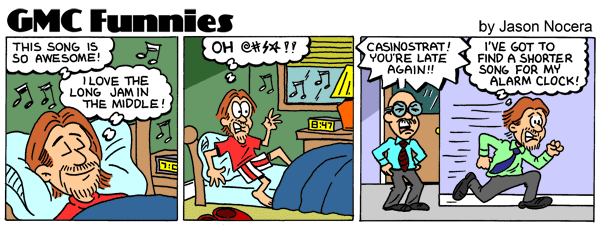Harmonic And Melodic Minor Modes Names |
|
|
|
|
|
| Jan 9 2013, 11:53 AM |
|
This looks very interesting
|
|
|
||
|
|
|
|
|
Jan 9 2013, 10:38 PM
|
|
Very fun mode for 7th chords, with a few names that makes it confusing. There's a system of scale names in the jazz world that compares all HM modes to their related major modes. It's great for learning the HM modes as you just alter any major mode you know by one note and you get the related HM mode. Here are the names if you want to check them out. HM 1 = Aeolian #7 HM 2 = Locrian #6 HM 3 = Ionian #5 HM 4 = Dorian #4 HM 5 = Phrygian #3 HM 6 = Lydian #2 HM 7 = Mixolydian #1 There's a similar system for naming MM modes that relates them back to major modes with only one note different between the MM mode and related major mode. MM 1 = Ionian b3 MM 2 = Dorian b2 MM 3 = Phrygian b1 MM 4 = Lydian b7 MM 5 = Mixolydian b6 MM 6 = Aeolian b5 MM 7 = Locrian b4 Those names don't really describe the chords that they produce, but they help learn the HM and MM modes rather quickly as you can just adjust the 7 major modes by one note to create these other scale systems. Might be worth checking out. This is Awesome!!!! -------------------- My Sound Cloud Profile: http://soundcloud.com/casinostrat
Gear I Use: Guitars: Gibson: Les Paul Custom, ES-339, and Faded Flying V Fender: American Stratocaster Deluxe (I think?) Epiphone: Les Paul 56' Gold Top and Les Paul Standard, Casino Yamaha: FG720S Accoustic Amps: Fender Champ, Peavey Bandit 112, and an ancient Epiphone Amp:) Effects: Digitech RP 500 Effects Pedal Picks: Dunlop Jazz IIIs Practice, Practice, Practice, and remember Every Artist Does Get Better Eventually!  |
|
|
||
1 User(s) are reading this topic (1 Guests and 0 Anonymous Users)
0 Members:




















